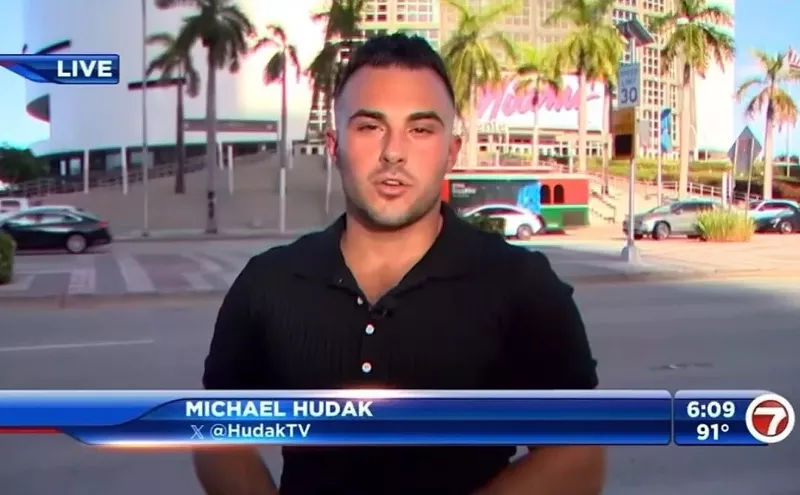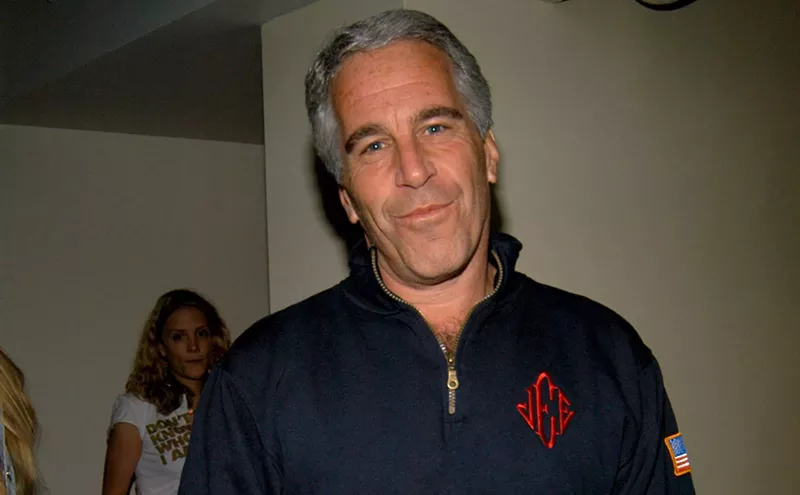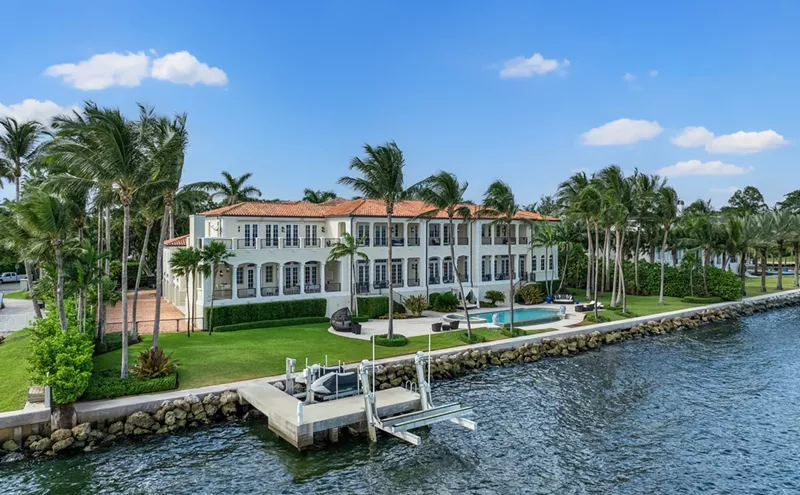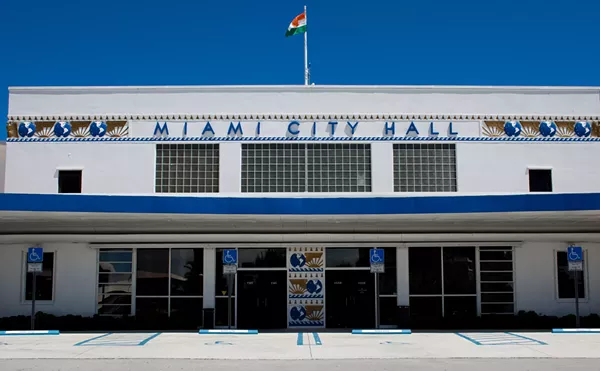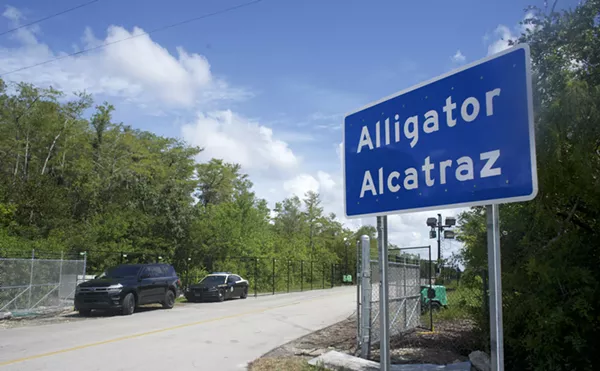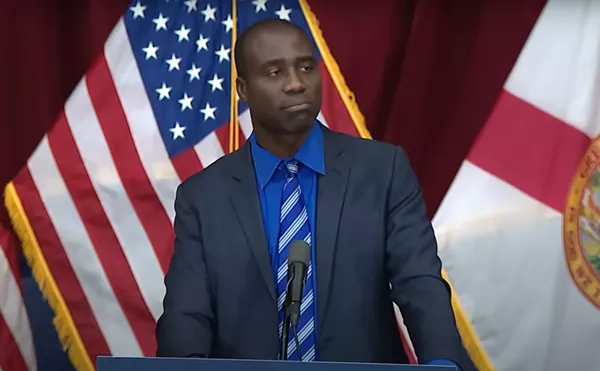Many of those powerless residents are now asking hard questions of the area's power monopoly, which has spent millions of dollars fighting policies that would have strengthened the grid in the event of a major storm like Irma and, more broadly, stemmed the carbon-fueled climate change likely fueling monster storms.
"I am one of the many that
McKenna is far from alone. FPL's workers on the ground seem to be doing all they can to fix downed lines and restore power to homes, and they deserve huge credit for working around the clock in awful conditions.
But the company's corporate and government-relations wings have serious questions to answer this week after quashing regulations that could have made the energy grid stronger at a slight expense to FPL's billion-dollar bottom line.
Hurricane Wilma, the last 'cane to hit South Florida, tore through the area in 2005 and killed power to 3.24 million of FPL's then-4.3 million customers (75 percent of the grid). Many of those customers had to wait up to two weeks for power to return. Since then, the company has spent more than $2 billion supposedly girding itself against the next storm, according to a Sun Sentinel piece published before Irma hit.
But after Irma, which by most reports brought only Category 1-strength winds to South Florida, by some measures the company did even worse. Despite all of those upgrades, an even larger percentage of FPL's customer base — 4.4 of 4.9 million customers, almost 90 percent — lost electricity this past weekend.
Granted, Wilma and Irma were different storms: Irma was larger and
Even worse, some of FPL's highly touted storm-ready technology didn't work after Irma.
Before the hurricane hit, FPL directed residents to regularly check its mobile app and online service map to see if their homes had power — but on Tuesday, FPL was forced to apologize after many residents said they were either unable to access the map or were repeatedly given inaccurate information. (Two New Times reporters were given wrong info this week — one was told her power was back on, only to travel home and find out she was still in the dark.)
"Communication systems across Florida were impacted by Irma, causing issues with our reporting systems," FPL's website said Tuesday. "We apologize if you were provided with incorrect status updates. We ask that you please re-report your outage if your power is still out."
The fiasco, naturally, has angered some Floridians, who are already fairly ornery after being trapped in homes without air conditioning and hot water for multiple days.
"The website gives no indication as to when individuals can expect power to be restored," McKenna, the reader in West Palm, says. "Their official,
On Tuesday, FPL President Eric Silagy asked "folks to be patient" with the company after the storm.
But many Floridians wonder ifAs of Wed, we restored nearly 60% of all customers affected by #Irma & are restoring at a pace of roughly 4:1 faster than Wilma in 2005.
— FPL (@insideFPL) September 13, 2017
FPL and its parent company, NextEra Energy, have for years heavily influenced state and local politics through donations, making billions in profits each year ($1.7 billion alone in 2016) thanks to favorable state laws that are sometimes literally written by the power company's own lobbyists.
"it was flashing & smoking.."#MiamiBeach residents begged FPL to turn OFF the power after #HurricaneIrma -What went wrong@WPLGLocal10 11pm pic.twitter.com/vazwPyjuBD
— Glenna Milberg (@GlennaOn10) September 13, 2017
FPL's lobbying wing has fought hard against letting Floridians power their own homes with solar panels. The company spent millions pushing Amendment 1, which would have ultimately made it harder for homeowners to embrace solar technology.Answers would be better than patience & PR, @insideFPL https://t.co/zcZAiW0UNz
— Glenna Milberg (@GlennaOn10) September 13, 2017
Thanks to power-company rules, it's expensive in Florida to simply buy a solar panel and power your individual home with it.
FPL's online rules also say that if the power goes out, your solar-power system must power down along with the rest of the grid if it does not have a set of backup batteries installed along with it. (Update: As Snopes and FPL have pointed out, this rule results from national safety guidelines for utilities.)
"Renewable generator systems connected to the grid without batteries are not a standby power source during an FPL outage," the company's solar-connection rules state. "The system must shut down when FPL's grid shuts down in order to prevent dangerous back feed on FPL's grid. This is required to protect FPL employees who may be working on the grid."
Yes, including me. I even have solar panels but can't get juice from them during a blackout because of FPL's rules. https://t.co/w6jX32FqYH
— Michael Grunwald (@MikeGrunwald) September 12, 2017
The law winds up forcing residents to remain reliant on the state's private power companies. For now, solar-panel owners can still get something out of the law, in that the "net-metering" provision lets you sell excess power back to the company. The provision also lets power companies charge a $400 or $1,000 application fee for consumers who want to install systems more powerful than 10 kilowatts.
But if power companies had their way, the net-metering law would vanish tomorrow. Both FPL and its trade association, the Edison Electric Institute, have spent millions trying to kill that net-metering law and instead win the right to charge you for installing your own solar-panel system. In 2016, FPL spent more than $8 million on Amendment 1, a ballot initiative that industry insiders admitted was written to trick customers into giving up their rights to solar power. The law's language would have paved the way for Florida to kill net-metering rules.
This past April, the Energy and Policy Institute caught an FPL lobbyist straight-up drafting anti-solar laws for Fort Myers state Rep. Ray Rodrigues, who also took a $15,000 campaign contribution from FPL this year.
Thanks to power-company influence, one of America's sunniest states lags far behind the rest of the nation when it comes to solar adoption.
FPL has also resisted some seemingly foolproof solutions to avoid storm outages, such as burying more lines. In a city that names its sports teams for hurricanes, a huge portion of FPL's power lines still sit above-ground and get blown apart even in tropical storm conditions.
The company's stubborn stance on burying lines has been on full display in an ongoing fight over 88 miles of new power lines it wants to build connecting to the Turkey Point Nuclear Generating Station in Homestead. That battle has dragged on for the better part of this decade, all because FPL has refused to bury lines. In 2014, the energy-friendly Gov. Rick Scott said FPL could move ahead with the project, but local governments
Bigger picture, FPL has also resisted solutions that would cut down on its carbon footprint in a state disproportionately affected by sea-level-rise- and climate-change-fueled monster storms.If @insideFPL buried its wires underground its monopoly profits would be a bit lower but millions of its customers would have power.
— Michael Grunwald (@MikeGrunwald) September 12, 2017
Instead of funneling money toward those extremely basic fixes, FPL has instead forced the public to pay for massive fossil-fuel and nuclear-energy plant upgrades. The company hiked rates by more than $811 million last year to build a
According to a March 2016 news release announcing a rate hike, FPL has apparently been studying the damage major storms such as Wilma and Hurricane Sandy caused to various electric grids:
FPL's updated storm hardening plan, also filed with the [Public Service Commission] today, outlines the company's 2016-2018 grid-strengthening initiatives, which build on the successes of improvements made since the program began in 2006 and incorporate lessons learned from major storms, such as 2012's Superstorm Sandy. By strengthening power lines and related infrastructure, hardening initiatives are designed to reduce outages and enable FPL to restore power for customers and help local communities recover more quickly when severe weather strikes.But residents are now still asking why, if FPL had a decade to prepare for Irma, most of Miami's power grid went dead so quickly in Cat 1 conditions after 12 years of so-called resiliency efforts.
This past Tuesday, a New Times reporter toured the Little River Mobile Home Park on NW 79th Street in Miami. Peter Jean, a jovial resident who grew up in Haiti, pointed at a busted-up jumble of power lines and said that in the early hours of Sunday morning, the lines snapped and sparked a small fire in the trailer park.
"Some of us tried to call FPL," Jean said. "Nobody came. Even now, no one has come."
Correction: After publication, this story was edited to make clear that FPL lobbying did not lead to rules governing




